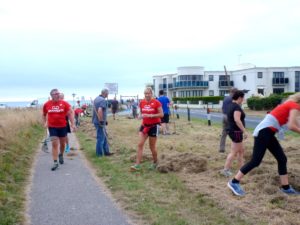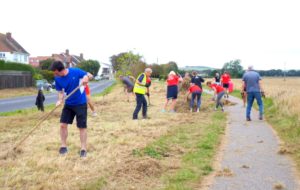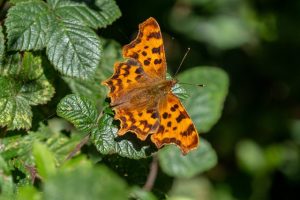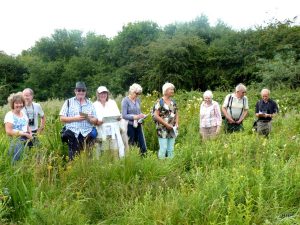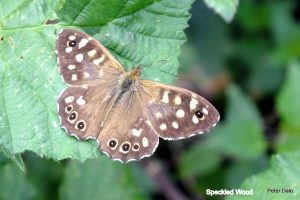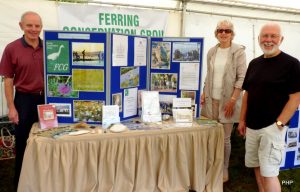For the last monthly meeting of the Group in 2019 Ian Everest came along to enlighten us and also create some nostalgia with a fascinating film and narration of life on a Sussex downland farm. Ian’s interest in the history of Sussex farming dates back to his childhood, which was spent living on a 1,000 acre downland farm on which his father worked.
In his teenage years Ian worked on farms in the Ouse Valley before attending Plumpton Agricultural College. After further practical farm activity, he worked at a farm animal-disease research centre before entering into farming-related commercial activities.
His talk looked at life on Manor Farm, Bishopstone, during the 1950’s and is based on a cine film made by farmer John Willett. After attending the Royal Agricultural College at Cirencester, John was keen to start modernising the farm by adopting new techniques and acquiring modern machinery. His father was reluctant to change with the times, and the film gives an interesting insight into the demise of the old ways of farming practices and the gradual change with the introduction of modern labour saving machinery.
More than thirty men were employed on the farm at harvest time but reducing to twenty at other times of the year. It was a tough life with little financial reward for the workers, but the men were highly skilled in many aspects of their work. Skills not learnt at school or college, but passed down to them by their forbears.
Due to their differing ideas on running the farm, John and his father did not always see eye to eye, so the filming sessions had two purposes. Curiously one was to keep John occupied and away from his father (!) although it was soon apparent that the farm labourers worked much harder during the making of the cine film.
Sadly the farm was eventually split up and sold but some of the farm buildings still exist and have been converted into residential premises.
After attendees enjoyed tea and mince pies Tricia Hall and Graham Tuppen took to the floor to jointly present the popular Nature Notes slot. The renowned broadcaster and natural historian David Attenborough is supporting a campaign to help save the kelp forests off the Sussex coast. Kelp is the name given to a group of brown seaweeds; usually large in size and these plants are capable of forming dense aggregations in underwater forests. Tricia and Graham were keen to inform members of the damage that has been caused to this most vulnerable biodiverse environment. According to one estimate, globally it can absorb about 600 million tonnes of carbon a year, twice as much as the UK emits annually. This campaign was launched by the Sussex Wildlife Trust and the Inshore Fisheries and Conservation Authority to introduce an inshore trawler exclusion zone to help the kelp regenerate.
An impromptu collection in aid of the Woodland Trust appeal to ‘Plant a Tree to Save the World’ resulted in attendees donating £90 which will be matched from Ferring Conservation Group’s fund.
Ed Miller concluded the meeting with planning news and advised members that a revised planning application had been submitted by the owners of Elm Lodge in Tamarisk Way, Ferring for an additional property to be built in the back garden. Also the proposal for 465 homes to be built on the Northern Goring Gap is expected soon.

